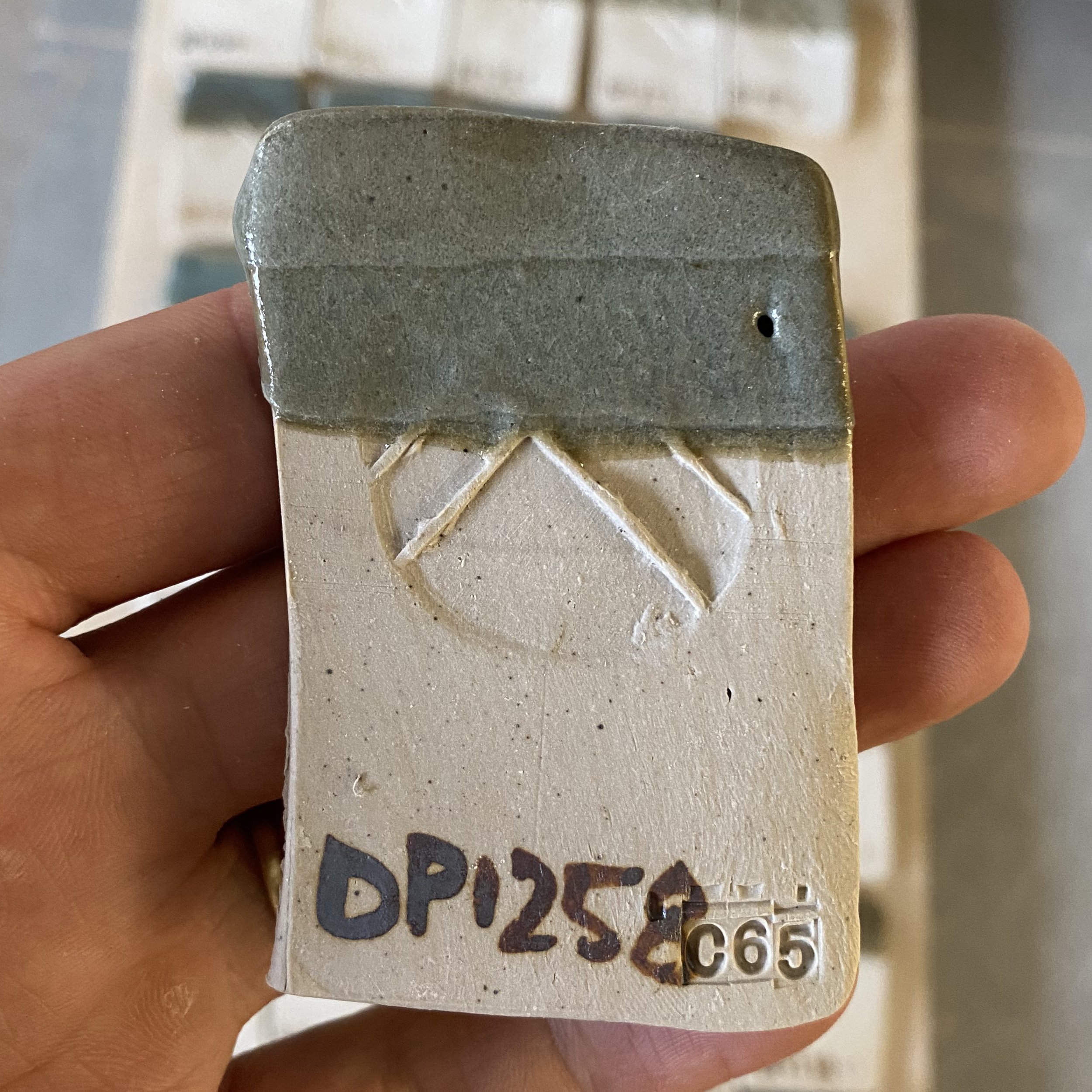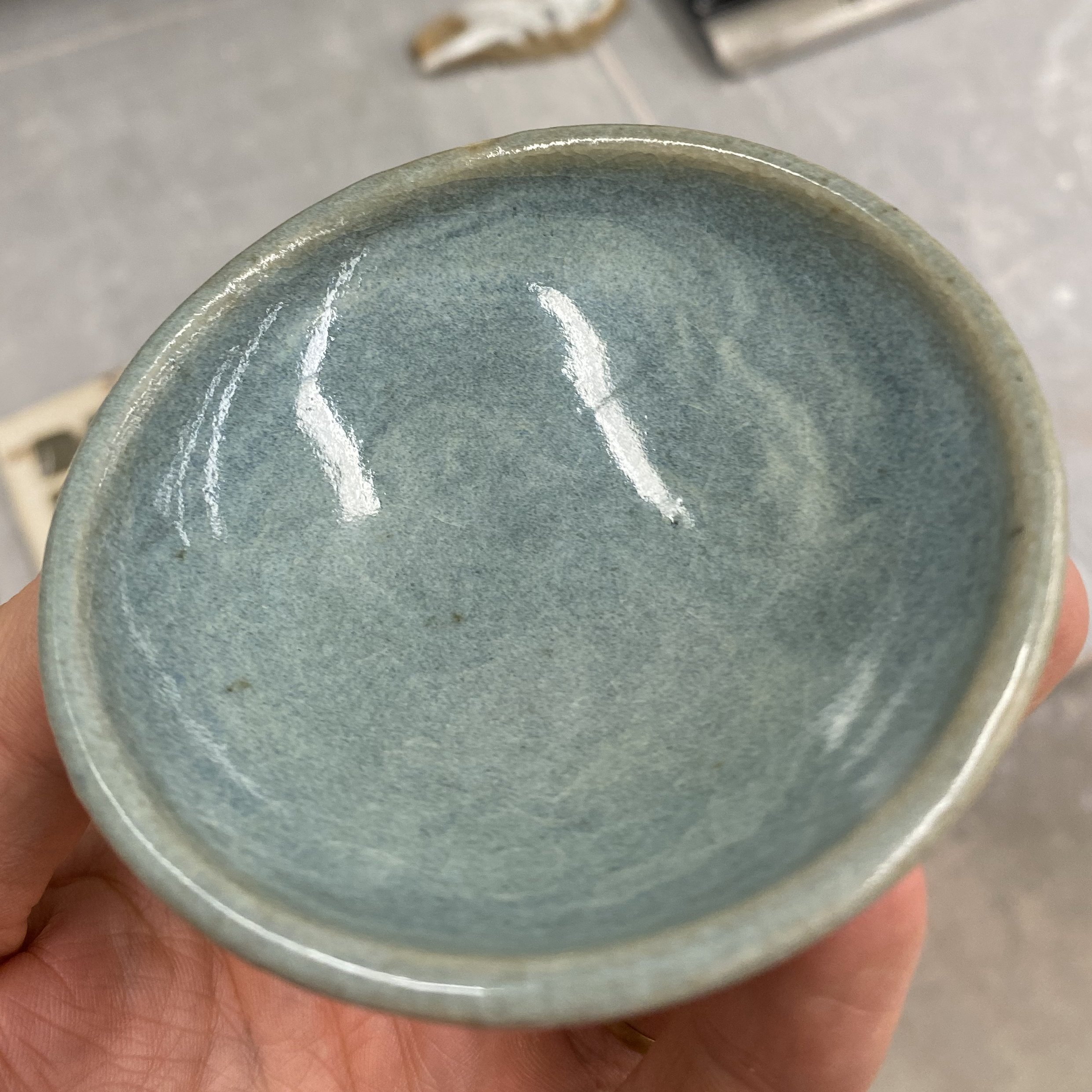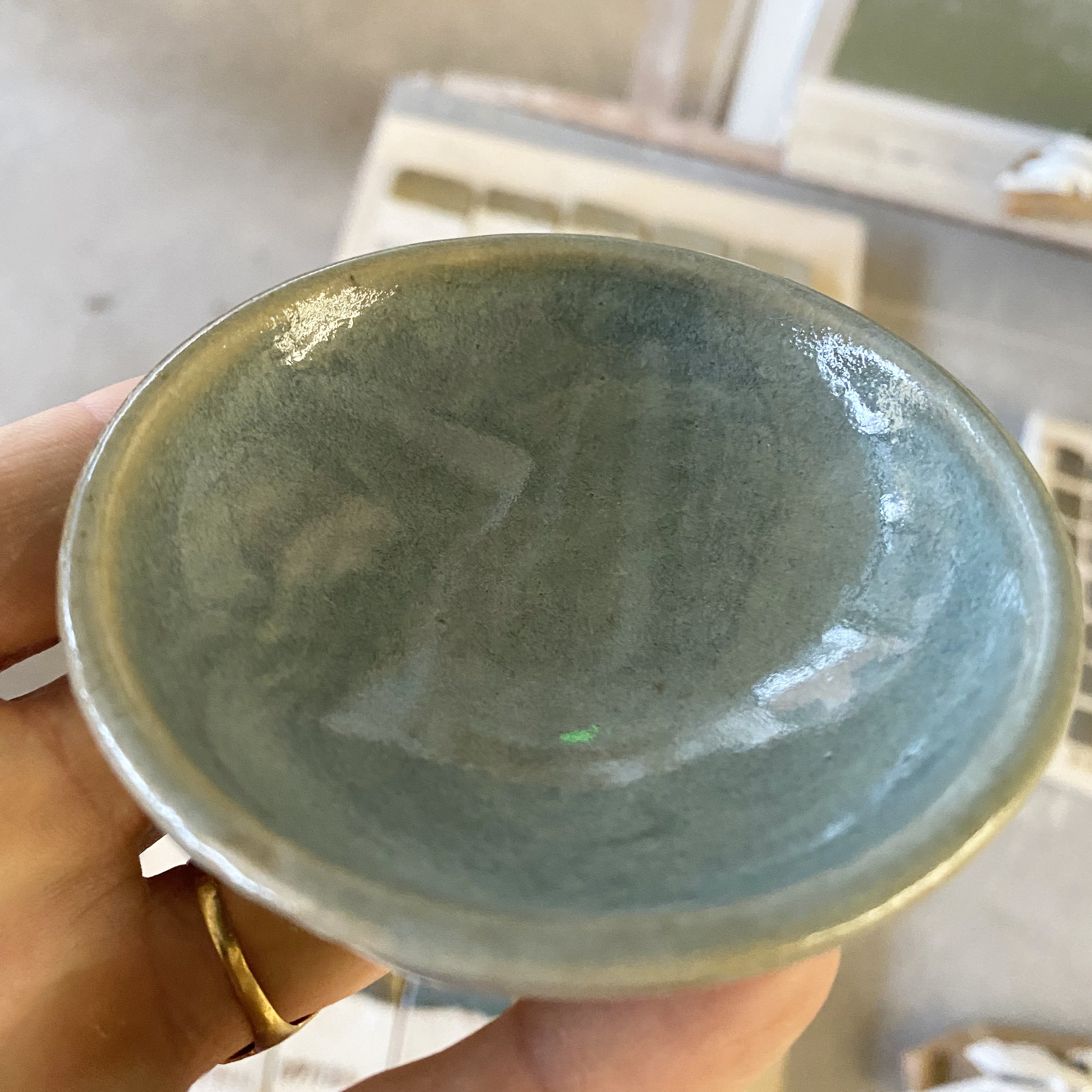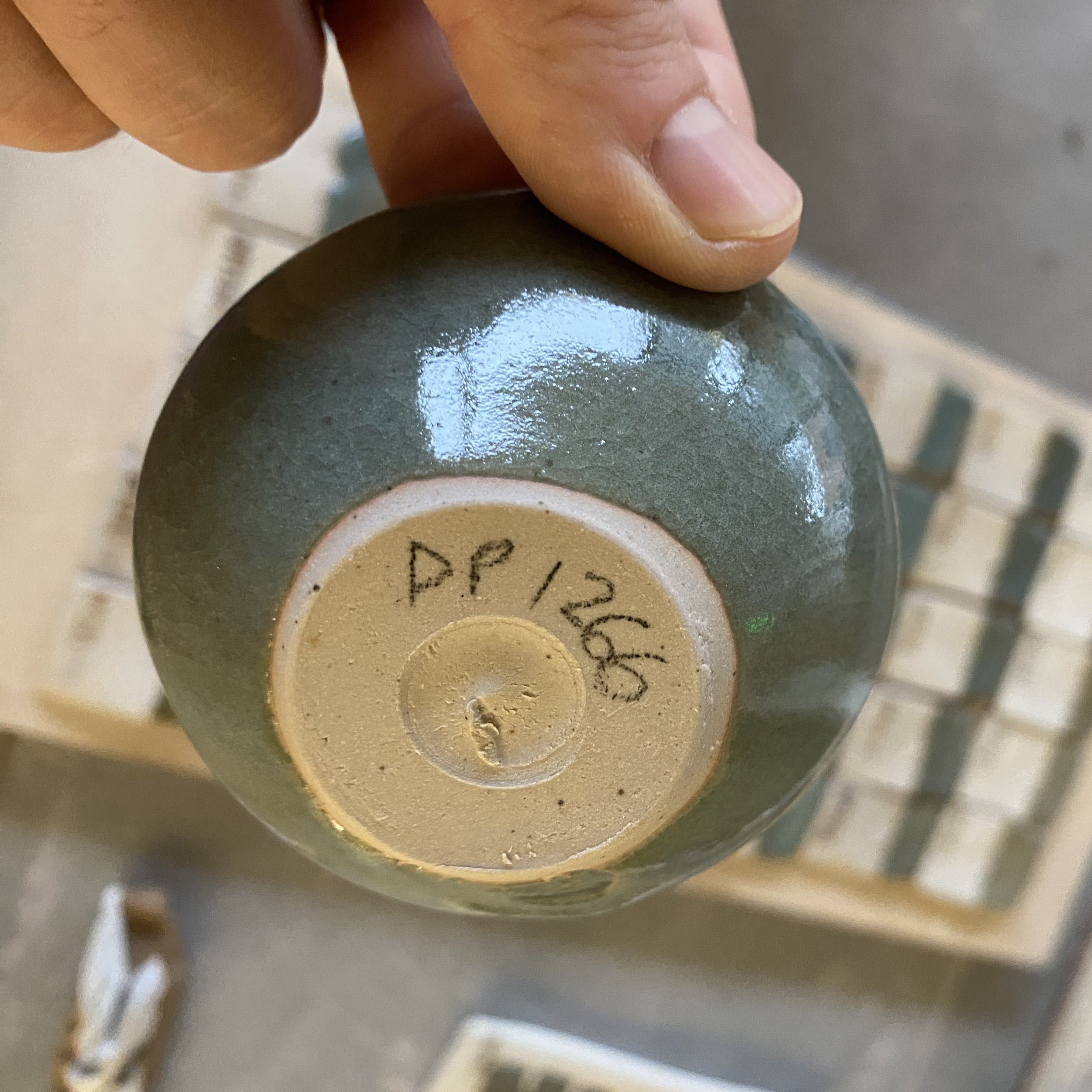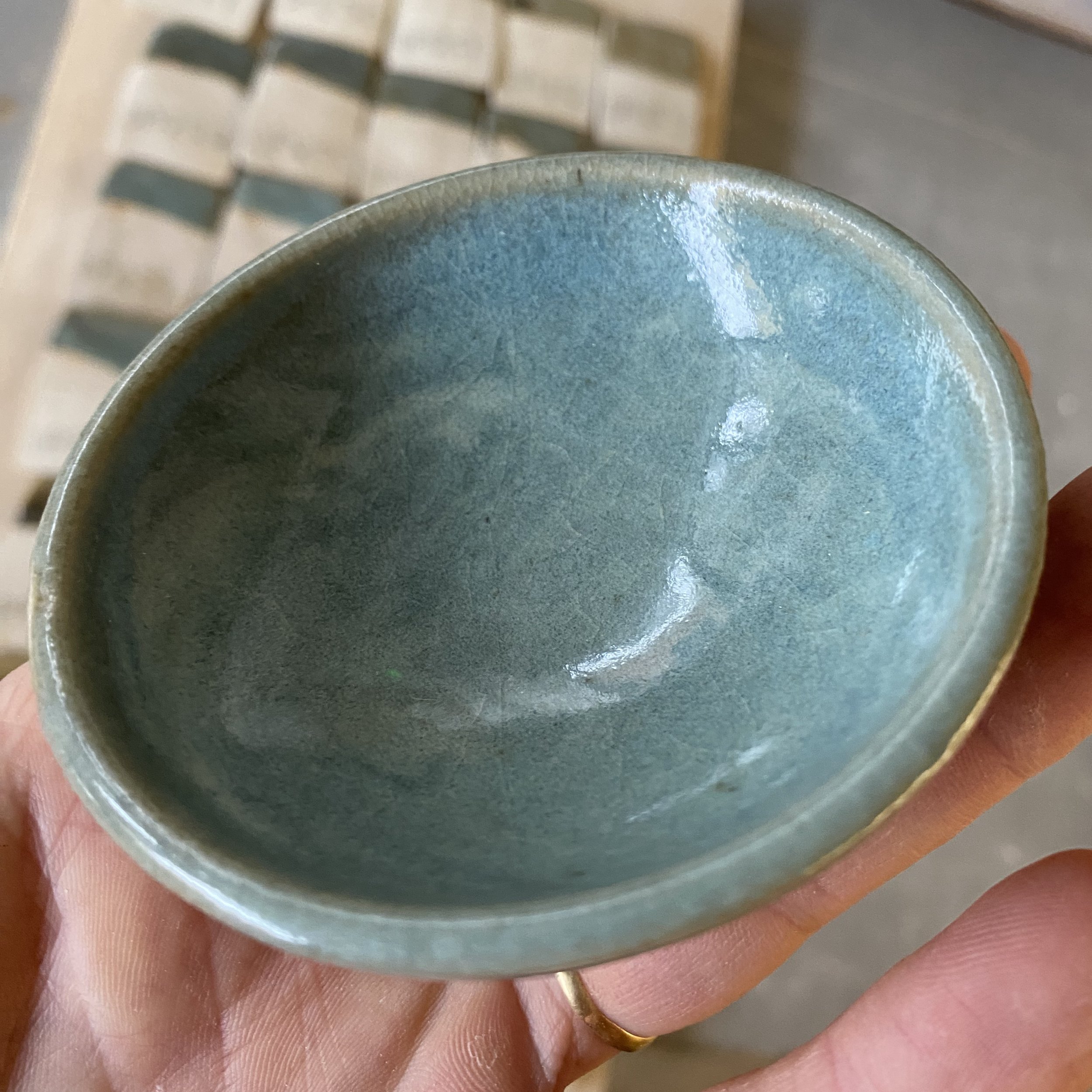Jun (Chün) glaze tests: grid test 3
In this grid test, I honed in on the most successful zone from my previous tests. Here are the corner recipes:
Corner A = DP 1249 : High Silica Corner
50% DP granite
25% Silica
15% Wollastonite
10% Mahavir (potash feldspar)
+ 1.5% Dolomite
+2% Bentonite
+2% Bone Ash
+1.5% RIO
Corner B = DP 1218 : High Silica and Wollastonite (calcia) Corner
45% DP granite
25% Silica
25% Wollastonite
5% Mahavir (potash feldspar)
+ 1.5% Dolomite
+2% Bentonite
+2% Bone Ash
+1.5% RIO
Corner C = DP 1244 : High Wollastonite (calcia) Corner
50% DP granite
25% Wollastonite
15% Silica
10% Mahavir (potash feldspar)
+ 1.5% Dolomite
+2% Bentonite
+2% Bone Ash
+1.5% RIO
Corner D = DP 1248 : High Devil’s Playground Granite Corner
65% DP granite
20% Silica
15% Wollastonite
+ 1.5% Dolomite
+2% Bentonite
+2% Bone Ash
+1.5% RIO
And the results…
Here are the vertically fired tiles which show us more information…
These tests show us how important the atmosphere in the kiln is. Aside from the glazes in the top row (and one below it, really), which seem a bit dry, every test in this grid has the potential to be a Jun glaze. The changes in composition are fairly minimal. The inconsistencies in the results were a little frustrating to me at first, but now I see they provide a solid lesson: Reduction is really important for the phase separation and color of these glazes.
Here are the tests individually (click to enlarge). Front side:
Back side of the tiles (with copper carbonate swatch on top left corner):
It looks to me like the glazes from DP1259 to DP1267, as well as DP1272, look the best. Let’s look at their composition…
DP1272 reads: 56.25 DP, 19.16 Wollastonite, 20.83 Silica, 3.75 Mahavir Feldspar, plus the 7% additions.
What can we conclude from this appearing to be the best zone? In all of them, the silica level is higher than the wollastonite, but they are pretty similar really. Let’s compare a few tiles: DP1259 which has 3.33% less wollastonite compared to silica, DP1264 which has equal amounts silica to wollastonite, and then DP1269 which has 3.33% more wollastonite compared to silica. In these three tiles, we have a nice little line blend. It seems clear to me that with the extra silica, the opalescent effect is stronger. DP1259 is the cloudiest, compared to DP1269 which is the most transluscent still. However, you can see the opalescent Jun effect on all of the tiles and I think if they were in a more reduced part of the kiln, DP1264 AND DP1269 would have come out more like DP1259.
This is not the most reliable test, as the placement in the kiln and atmosphere clearly played a big role.
The oxidised tiles are green and do not show much opalescence, whereas the reduced tiles are quite promising, all across the grid. You can see on some of the tiles that half of the tile got more reduction than the other half, such as DP1266 here…
I also had a small test bowl glazed with DP1266 in the kiln which got properly reduced and came out nicely. Here it is…
The difference in the tile to this dish shows the overall inconsistencies of this test and the elusiveness of the Jun glaze!
This grid set of tests led me to the conclusion that I am in the right zone, but a lot depends on the firing. This was fired straight up in what I thought was a medium-reducing atmosphere. The tiles show that it was not as reduced as I hoped, and the areas that weren’t did not develop the Jun opalescence.
I would also note that in most of these tests, the copper did not show up as easily as some of my previous tests. I am thinking of trying to apply the copper over the glaze to see if that works, and also trying to mix the copper into some of the glaze. But it might be a case where having less silica helps the copper come through.
Next firing, I will try to do a slow cooling and keep the kiln in a heavier state of reduction.
These results are very encouraging, though. Especially this little dish at the end.














